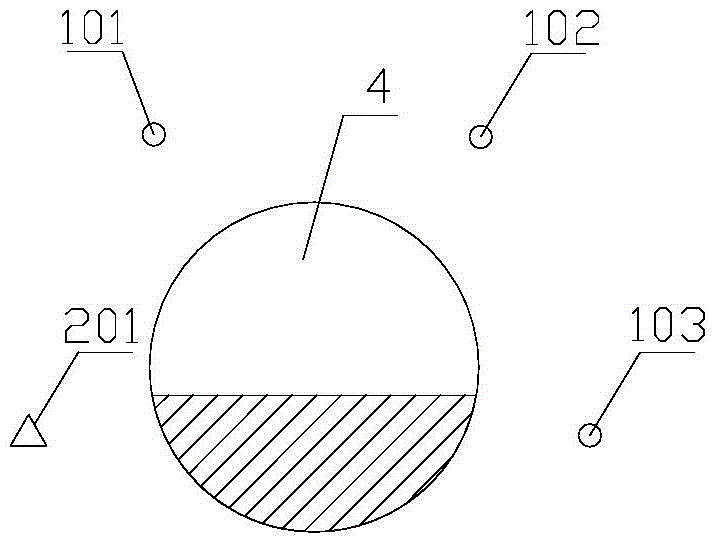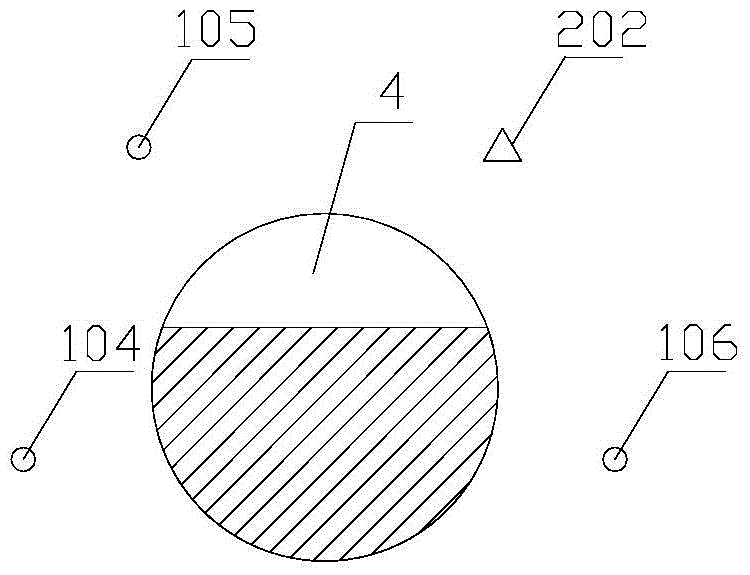A sensor arrangement method for microseismic monitoring of deep-buried hard rock tunnel excavated in layers
A technology of microseismic sensors and layered excavation, which is applied in the direction of seismic signal receivers, etc., can solve problems such as being surrounded by rock masses, and achieve the effects of preventing excavation and blasting, ensuring safety, and ensuring accuracy
- Summary
- Abstract
- Description
- Claims
- Application Information
AI Technical Summary
Problems solved by technology
Method used
Image
Examples
Embodiment
[0028] The section of a tunnel is circular, excavation in layers is adopted, and the relaxation depth of the surrounding rock of the tunnel is within 2m. The stability microseismic monitoring of the tunnel is carried out. The arrangement of the microseismic sensors is as follows. Time:
[0029] 1) The maximum monitoring range of the microseismic sensor in the monitored tunnel 4 rock mass is 180m, and the first group of microseismic sensors is arranged, three of which are unidirectional microseismic sensors, the model is South African 1G14 microseismic sensor, the natural frequency is 14Hz, and the response range is 7~2000Hz, respectively the first one-way microseismic sensor 101, the second one-way microseismic sensor 102, the third one-way microseismic sensor 103, and the other is the first three-way microseismic sensor 201, the model is South African 3G14 microseismic sensor, its The natural frequency is 14Hz, and the response range is 7-2000Hz. Different types of sensors ca...
PUM
 Login to View More
Login to View More Abstract
Description
Claims
Application Information
 Login to View More
Login to View More - R&D
- Intellectual Property
- Life Sciences
- Materials
- Tech Scout
- Unparalleled Data Quality
- Higher Quality Content
- 60% Fewer Hallucinations
Browse by: Latest US Patents, China's latest patents, Technical Efficacy Thesaurus, Application Domain, Technology Topic, Popular Technical Reports.
© 2025 PatSnap. All rights reserved.Legal|Privacy policy|Modern Slavery Act Transparency Statement|Sitemap|About US| Contact US: help@patsnap.com



